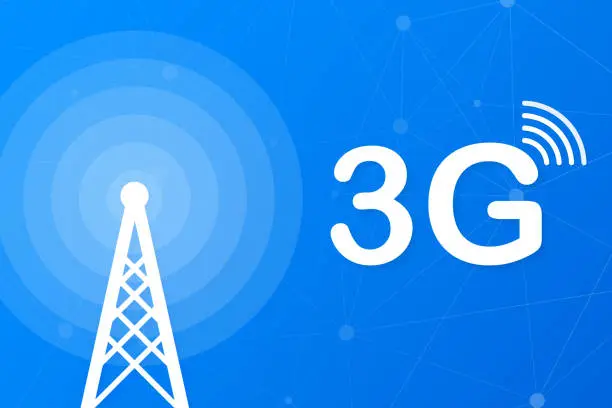3G Technology, also known as third-generation technology, revolutionized the mobile telecommunications industry by introducing faster data transfer rates and improved mobile services. In this article, we will delve deeper into the features, benefits, and drawbacks of 3G Technology and its impact on modern-day communication.
Features of 3G Technology
- High-Speed Internet Access: The introduction of 3G technology allowed mobile devices to access high-speed internet, enabling faster data transfer rates and better connectivity.
- Multimedia Services: 3G technology made it possible to access multimedia services such as music and video streaming on mobile devices, enhancing the user experience.
- Video Calling: With 3G technology, users could make video calls, allowing them to communicate with family and friends in real-time, regardless of location.
- Global Roaming Capabilities: 3G technology enabled global roaming, which allowed users to access 3G services in other countries, making it easier to stay connected while traveling.
Benefits of 3G Technology
- Improved Connectivity: With faster internet speeds and better connectivity, 3G technology allowed users to stay connected with family and friends, and access information on the go.
- Enhanced Mobile Applications: 3G technology played a crucial role in the development of new mobile applications, enabling the growth of mobile banking, social media, and e-commerce.
- Increased Productivity: With faster data transfer rates, 3G technology made it possible to work on the go, increasing productivity and efficiency.
- Accessible Technology: 3G technology made it possible for people in remote areas to access the internet and communicate with others, bridging the digital divide.
Disadvantages of 3G
- Limited Data Transfer Rates: While 3G technology enabled faster data transfer rates than 2G, it was still limited compared to newer technologies such as 4G and 5G.
- Network Congestion: As more people started using 3G technology, network congestion became a common problem, resulting in slower internet speeds and dropped calls.
- High Costs: 3G technology was expensive to implement, resulting in higher costs for both service providers and consumers.
- Battery Life: Using 3G technology on mobile devices drained battery life quickly, resulting in shorter battery life and reduced usability.
Read More: 60+ Best WordPress Plugins for Your Site in 2022 (Most are FREE)
How 3G Works
3G technology, also known as third-generation technology, is a mobile telecommunications technology that offers faster data transfer rates and improved mobile services. In this article, we will delve deeper into how 3G technology works and the technology behind it.
The technology behind 3G is based on a set of standards for mobile communications that were developed by the International Telecommunication Union (ITU). These standards are known as the IMT-2000 (International Mobile Telecommunications-2000) and define the requirements for a global standard for third-generation mobile communications.
One of the key features of 3G technology is its use of a technology called Code Division Multiple Access (CDMA), which allows multiple users to share the same frequency band simultaneously. This enables more efficient use of the available bandwidth and allows for faster data transfer rates.
In 3G technology, data is transmitted over a network of base stations and antennas that are connected to the internet. These base stations communicate with mobile devices using radio waves, which are transmitted through the air.
When a user makes a call or accesses the internet using 3G technology, the data is transmitted to the nearest base station, which then sends it to a central switching station. The switching station then routes the data to its destination, whether it’s a phone call, a text message, or an internet connection.
One of the main advantages of 3G technology is its ability to handle both voice and data transmissions simultaneously, allowing users to make phone calls and access the internet at the same time. This is made possible by the use of different frequency bands for voice and data transmissions.
Another key feature of 3G technology is its support for multimedia services, including music and video streaming. This is made possible by the higher data transfer rates offered by 3G technology, which enable faster download and upload speeds.
In conclusion, 3G technology works by using a set of standards for mobile communications developed by the ITU, and by utilizing a technology called CDMA for more efficient use of the available bandwidth. Data is transmitted over a network of base stations and antennas, allowing for simultaneous voice and data transmissions, as well as support for multimedia services.
Also Read: 10 Best Mobile Phones Between BDT 15000 to BDT 20000 in BD
Conclusion
In conclusion, 3G technology played a crucial role in the evolution of mobile telecommunications technology, paving the way for faster internet speeds, multimedia services, and video calling on mobile devices. It uses a combination of circuit-switched and packet-switched communication to transfer data between the user’s mobile device and the network. Despite being replaced by newer technologies such as 4G and 5G, 3G technology remains an important part of the mobile telecommunications landscape.


1 thought on “What is 3G Technology? How 3G Technology Works”